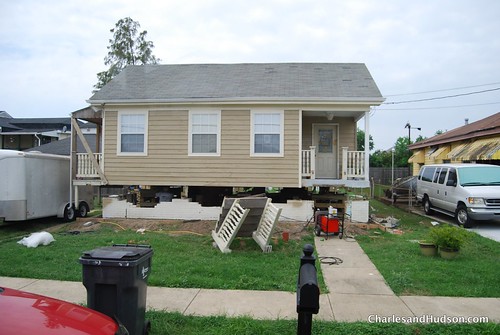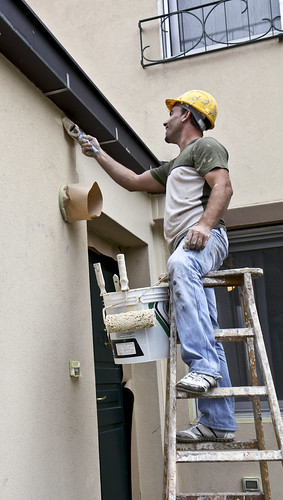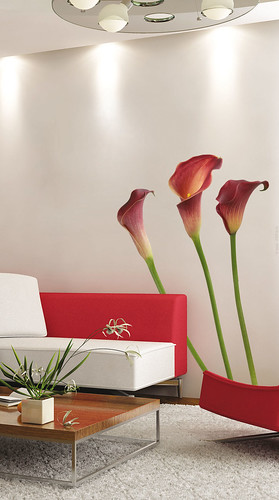While lighting the exterior of your house is not difficult at all, it is also easy to make mistakes when it comes to where the lighting fixtures should be affixed. Try strolling around your house after dark and you will notice that there are some areas that are cloaked in the shadows, paths that are hard to thread on in the darkness, or seating areas that are rendered useless at night. You may also find spots that are too bright that guests and passers-by have to cover their eyes from the glare of your lighting fixtures.
Fortunately, it is easy to correct these problems. With a little know-how on proper placement and what type of lights to use for certain spots, you can make the exterior of your home safer and more usable after the sun goes down and at the same time lend drama to the space. Below are some tips on how you should incorporate lights into your home’s exterior, where they should be placed, and what types of fixtures you should use.
Front door
Lighting is particularly important on the access and egress point of your house for good reasons. It shows people where to enter and where the doorbell and keyhole are positioned; prevents tripping on the steps; and allows the people inside to know who is at the front door.
The most ideal light fixtures to use on the front door are lanterns with two low-voltage compact fluorescent bulbs placed on both sides of the door (preferably mounted along the front door’s upper third portion). These fixtures provide the right amount of light without glare and at the same time enhance the appeal of the front door.
When picking wall or post lanterns, go for pieces with frosted or colored lenses instead of those with clear glass as they are easier on the eyes.
Garage and Driveway
Just like how you would light up your front door, you should also provide proper illumination on your garage and driveway entrance so that guests and vehicles will be able to find your home at night. For the driveway, it is not necessary to light up the entire strip. A few low-voltage spreadlights staggered along the edge of the pavement will suffice. Your garage, on the other hand, will benefit from the addition of some wall-mounted compact fluorescent floodlights near the door and on the sides. Also, do not forget to illuminate your house number. Guests arriving at night as well as emergency responders will definitely appreciate such addition since they will be able to know which house is yours.
Steps and walkways
To lead guests to the front door and guard them against slipping, layered lights coming from low-voltage fixtures are the most suitable choices for illuminating steps and walkways. Popular fixture selections for these locations include bollard lights, mushroom lights and path shaded tier lights. All these fixtures cast light downward so they are easy on the eyes. They also come in a wide variety of styles and different price points, allowing you to pick pieces that complement the look of your home and your budget.
For the most pleasing effect when positioning the lights and prevent the runway look, do not place all the lights on a straight line. Instead, stagger them on both sides of the steps and walkways.
Seating areas (patios, decks, porch)
To ensure you will be able to entertain guests even after dark, do not forget to light up your outdoor living areas. There is no hard or fast rules when it comes to lighting up outdoor living spaces, allowing you to take free helm on your light choices. However, do not forget to install task lighting in or near areas where they are needed and where safety might be a concern, such as benches, stair risers, deck railing and the wall near the grilling or dining area.
To avoid attracting pests to your patio, deck or porch, it will be preferable to go for compact fluorescent bulbs that are specially designed to ward off pests. You may also control the amount of light in the area if you use dimmers that will let you adjust light levels.
Landscape features
Add a touch of drama to your home’s exterior by highlighting the beautiful features in your landscape with a combination of low-voltage lighting and accent lighting. To do this, pick a focal point that you wish to emphasize, such as a specimen tree or a structure, along with secondary areas. To illuminate your primary focal point, use flood lights affixed to in-ground poles or spotlights attached on a nearby wall, fence or other elevated structure. For secondary areas like flower beds, ground covers and statuary, emphasize them with low-voltage fixtures that are recessed into the ground. Or, go for a backlit effect or hidden glow by pinning the light sources between the objects you want to highlight and the wall of your house.
Just a word of caution: be mindful where you direct the beams of your lights. At the most, they should not be pointed toward your neighbors windows.
The guest post above, which was written for www.steelbuildingsuk.co.uk, was contributed by Ericka. Ericka is a home improvement and gardening enthusiast. Her passion for these subjects inspires her to write useful posts about house repairing, decorating, cleaning and organizing.


